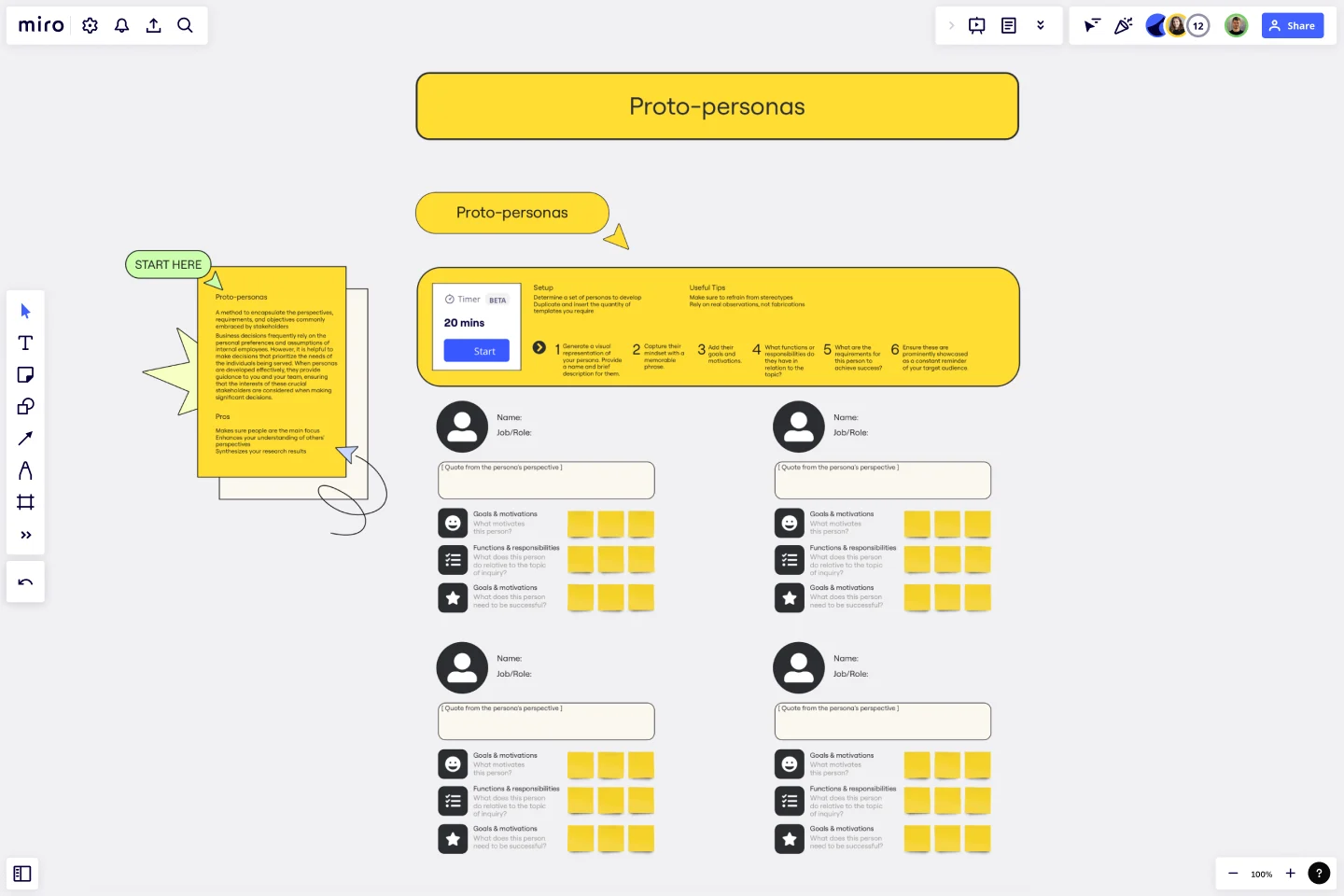Proto Persona Template
Identify and understand the perspectives, requirements, and objectives that are commonly embraced by stakeholders with the Proto Persona Template.
About the Proto Persona Template
Business decisions often rely on the personal preferences and assumptions of internal employees. However, it is essential to prioritize the needs of the people served when making decisions.
The Proto Persona Template can help you identify and understand the perspectives, requirements, and objectives commonly embraced by stakeholders. When personas are developed effectively, they guide you and your team, ensuring that the interests of these crucial stakeholders are considered when making significant decisions.
Benefits of using the template
Make sure people are the main focus.
Enhance your understanding of others' perspectives.
Synthesize your research results.
How to use the template
Generate a visual representation of your persona. Provide a name and brief description for them.
Capture their mindset with a memorable phrase.
Add their goals and motivations.
What functions or responsibilities do they have in relation to the topic?
What are the requirements for this person to achieve success?
Ensure these are prominently showcased as a constant reminder of your target audience.
Setup
Determine a set of personas to develop.
Duplicate and insert the quantity of templates you require.
Useful tips
Make sure to refrain from stereotypes.
Rely on real observations, not fabrications.
Get started with this template right now.
The Ultimate Storyboarding Template
Works best for:
Storyboard, Design, Planning
Elevate your storyboarding with The Ultimate Storyboarding Template. Designed for ultimate flexibility and detail, this template supports a wide range of projects, from films to product launches. It includes sections for scene breakdowns, character arcs, and visual elements, making it ideal for comprehensive storytelling. Use it to create detailed, engaging storyboards that communicate your vision clearly and effectively to your team and stakeholders.
Empathy Mapping for Impact
Works best for:
Market Research, Research & Design
Empathy Mapping For Impact template is designed to help you capture and understand user experiences deeply. By focusing on what users think, feel, and do, you can create impactful and meaningful products. Perfect for UX designers and researchers.
Root Cause Evaluation Template
When you first encounter a complex situation, it's not common to immediately delve into its underlying causes and effects. Often, we grasp the overall picture but fail to separate the problem from its surrounding circumstances. Root Cause Evaluation provides a method to better understand the interconnected factors that have contributed to the current situation.
Diary Template
Works best for:
Design
The Diary Template is an effective research tool to gain insights into individuals' internal processes as they document their encounters with a specific product, service, or matter. Unlike real-time interactions, journaling is usually conducted asynchronously over an extended period of time, enabling deliberate reflection that other methods may not facilitate. This asynchronous nature encourages individuals to express more elaborate accounts of their emotions and viewpoints, resulting in profound and stimulating responses.
Service Blueprint by Slalom Philadelphia
Works best for:
Research & Design
The Service Blueprint by Slalom Philadelphia helps you map out service interactions and backstage processes. It's perfect for identifying service gaps and optimizing workflows. Use this template to align teams, improve customer experiences, and ensure seamless service delivery. It's ideal for fostering collaboration and strategic planning, making it a valuable tool for service design and improvement initiatives.
Empathy Map for Food Ordering App
Empathy Map template aids in visualizing your users' experiences. It helps teams understand what users see, think, and feel, ensuring your product meets their needs. This tool is essential for building empathy and designing better user experiences.
